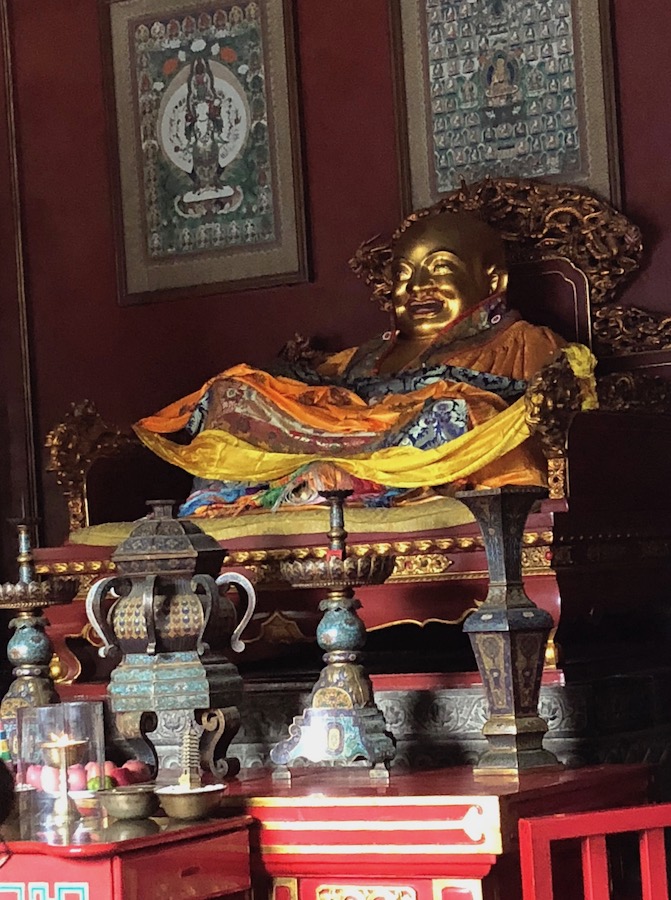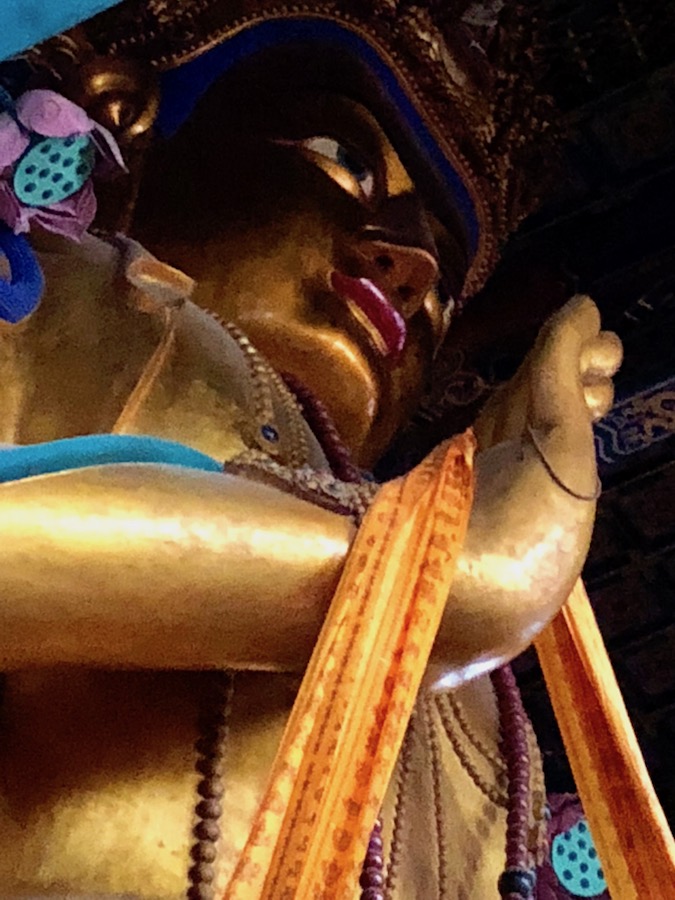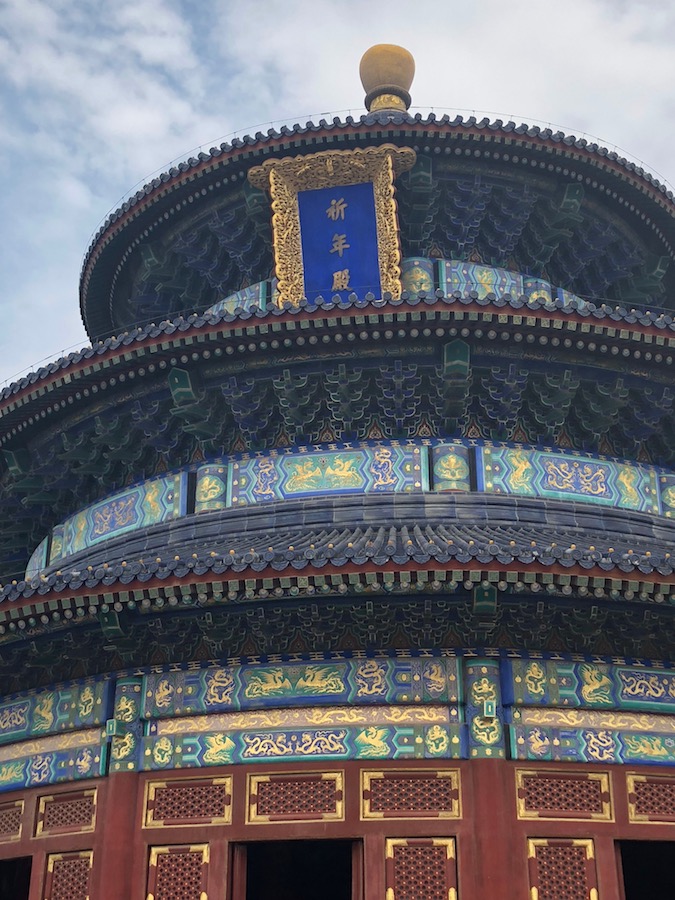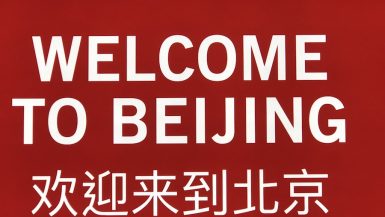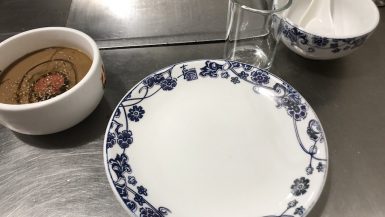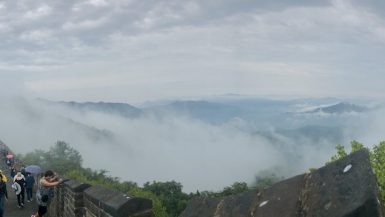September 1, 2018
Just before 9:00 a.m., Mr. Lee dropped us off at the gate to the Lama Temple, a complex constructed during the 17th century and converted into a Tibetan lamasery in 1744. We were not alone, as there were at least 200 people standing outside the walls waiting for the gates to open. While some were tourists, most were Buddhists there to light incense (free with admission) and pray.

The complex has five main halls and uses a blend of Han, Mongol, and Tibetan symbolism. Even the plaques are written in Chinese, Manchurian, Mongol, and Tibetan.

Each hall contains one or more Buddha statues representing the past, present, and future. There are laughing Buddhas, somber Buddhas, and even a 55 foot tall Buddha carved from a single sandalwood tree (the Buddha is so tall, at least 15 feet of him is below ground to fit it inside the temple).
Each Buddha was beautiful in its own right. In fact, the entire temple complex was stunning. Photos were not allowed inside the temples, so I took them from outside the door, except for the one I snuck of the tall Buddha.
My only caution for a visit to the Lama Temple is that if you are allergic to incense or sensitive to smoke or smells, this might not be the place for you.
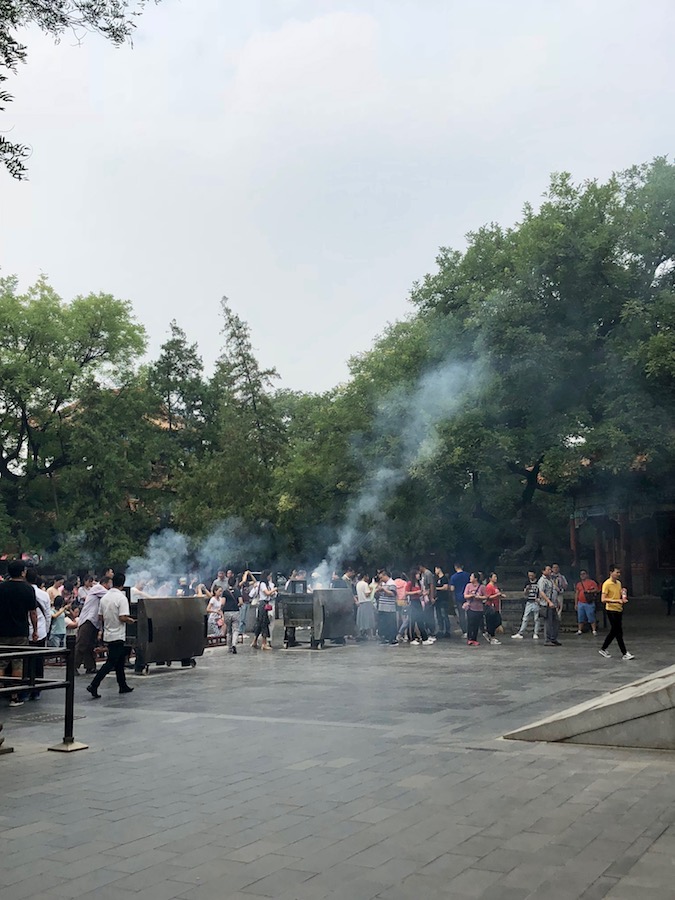
We next explored some of Old Beijing’s hutongs (alleyways) and around a portion of Hou Hai Lake in the back of a bicycle rickshaw.

I felt badly for our driver going up the hills as he seemed to struggle under the weight of his cargo.

Our local guide took us into one of the courtyard houses in the hutong. Most of the hutong inhabitants are older. The younger generations have moved out to newer, more western apartments. Since the courtyard houses were originally built hundreds of years ago, not many have indoor plumbing; there are communal restrooms and bathhouses. Apparently, the younger generations place indoor plumbing higher on their priority list than authentic charm (I probably would too).
Although several families can live within the confines of the courtyard, the one we visited was owned by a single family and included 3 small houses – one for the parents, one for their male child and one for their female child.
All totaled, the houses were about 3000 square feet. The price if you wanted to buy this courtyard house in the hutong (if it was on the market)? Approximately $10 million (US). A little rich for my blood. Only 20% of the hutong homes are owned individually. The remainder are owned by the government and rented. If you’re a citizen of Beijing (strict interpretation), the rent could only be $100 per year. If you’re an outsider (anyone not born to old Beijing blood), the rent could be $1000 or more per month. Pays to know the right people.
Next on the tour was a visit to the Temple of Heaven, one of the largest temple complexes in China. It was here that the Emperor prayed and made sacrifices (specially selected piggies and lambs) to heaven to garner favor of the gods for a good harvest.
At the center of the complex is the Qinian Dian or Hall of Prayer for Good Harvests. Built on a three tiered marble platform, the brightly colored circular tower topped with a conical roof of dark blue tiles (symbolizing heaven) and a golden knob was built without the use of a single nail. The structure is fantastic, the use of color superb and the view of the city from the top tier is pretty fantastic.
The grounds associated with the Temple of Heaven are huge and are used as any other park would be. Of particular interest, are the early morning exercisers (Tai Chi, dance, etc.), which we weren’t lucky enough to see, and the exercisers who take advantage of the free exercise equipment provided by the government, which we did see. These guys are all over the age of 60, in fantastic shape, and like to show off.

Since our food tour, Sindy and I had been craving dumplings. Our guide, Serena, decided we had to do lunch at Tian Jin Bai Joao Yuan, a famous dumpling house.
I wasn’t too sure about her restaurant selection because we were met with glass enclosures of various fish and large ugly frogs as we entered the front door. Undeterred, we walked upstairs, were seated and plied with noshes of shrimp chips and crystallized hawthorn (really good) while we perused the book-sized menu. We ultimately decided on an order each of pork/shrimp/egg, duck/mushroom, and veggie dumplings – all of which were inhaled quickly, so quickly we forgot to take a picture until it was almost too late.
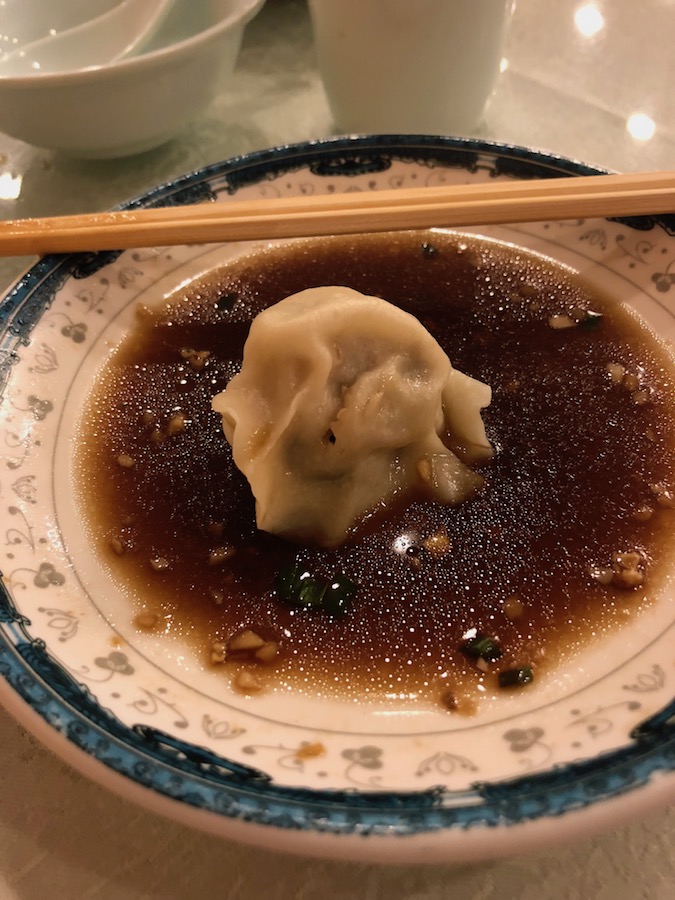
As has been typical of our entire trip, we were the only caucasians in the restaurant. Our presence was particularly of interest to the little girl at the next table. She couldn’t take her eyes off of us the entire time, even when her grandfather was trying to feed her. I’m sure she hadn’t ever seen anyone who looked like us before. She only became shy and turned away when we waved goodbye.
Our afternoon was spent engaging in the sport of … shopping. We first went to the Pearl Market (Hongqiao), also known as the knock-off market. Five floors of nicknacks, electronics, handbags, souvenirs, and one floor of high-end jewelry – all at discount prices.

I wasn’t quite prepared for the “lady, here lady” calls or the invasions of personal space as they tried to pull us into small shops. I soon became deaf to the calls, walked down the center of the walkways, and repeated “no thank you” over and over. A few minor purchases made, we were soon ready to leave; the place made me claustrophobic.

Our final shopping stop of the day was Wangfujing Street, Beijing’s main shopping street. This pedestrian street is lined with more malls than should be necessary. Inexpensive shops stand next to couture fashion stores. There’s simply something for everyone. There’s one whole building set aside for anything sports related, and another entire building is the largest bookstore I’ve ever seen. If you can’t find what it is you are looking for here, it doesn’t exist.
Of all things to be looking for, we were in search of chocolate or candies made in China (Sindy’s request, to take back home). Serena finally lead us to a food mart that had a huge selection of candy (no chocolate – apparently, generally speaking, the Chinese aren’t really “sweets” people). The young man behind the counter and Serena each pointed out their favorite childhood candies and a variety were purchased. Of course, we had to do a taste test and I can confirm their selections were pretty good.

On the way to meet Mr. Lee for our last ride of the tour back to our hotel, we passed St. Joseph’s, a beautiful Catholic Church. In the church courtyard, a young couple were having their wedding pictures taken.
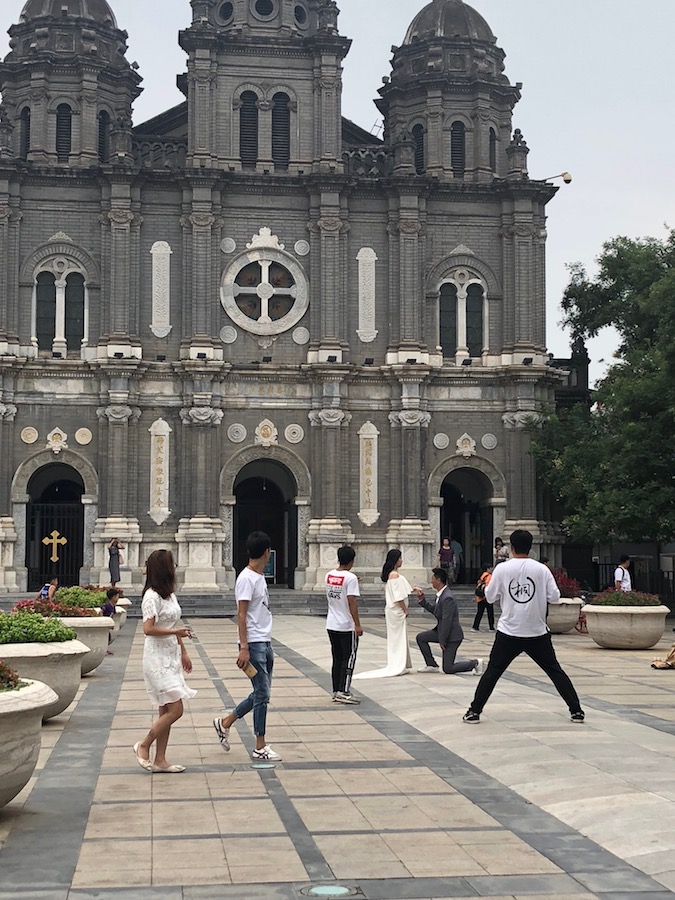
Wedding pictures are actually taken three months prior to the wedding, in clothing borrowed from the photography studio. This makes sure that the photos are available at the time of the wedding. Seems a little backward to me but to each their own.
Serena bid us farewell as we were close to a subway stop where she could take a train home. Mr. Lee fought the Saturday rush hour traffic to get us back to the hotel. Tomorrow we are on our own.


